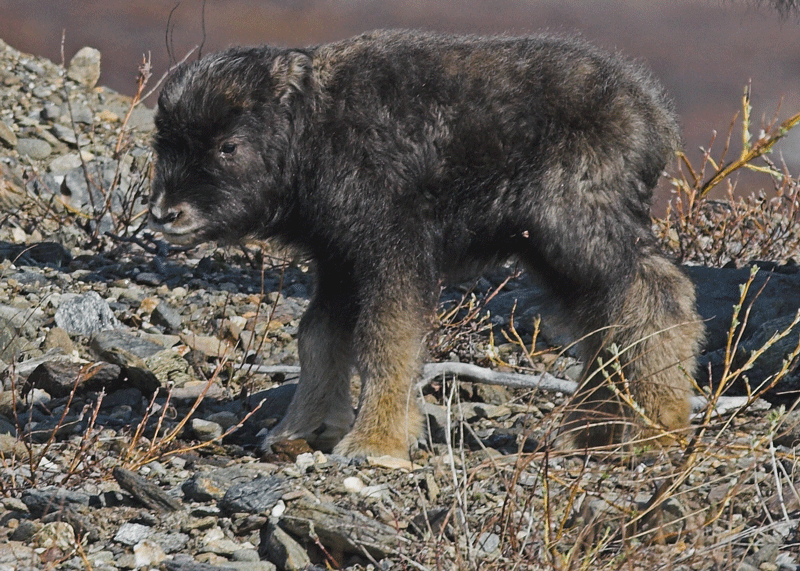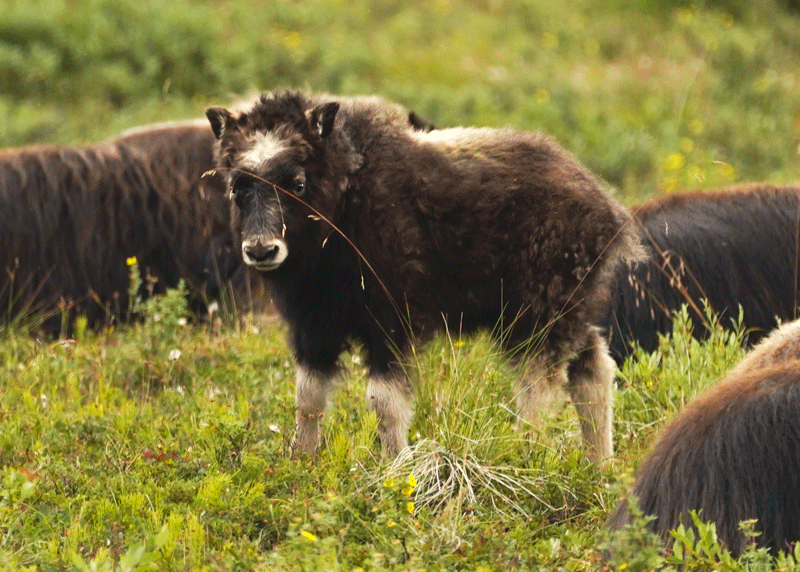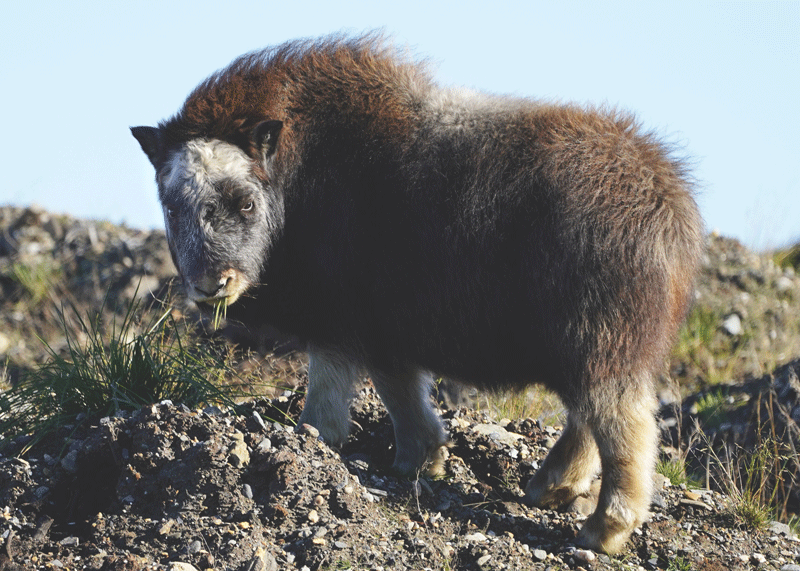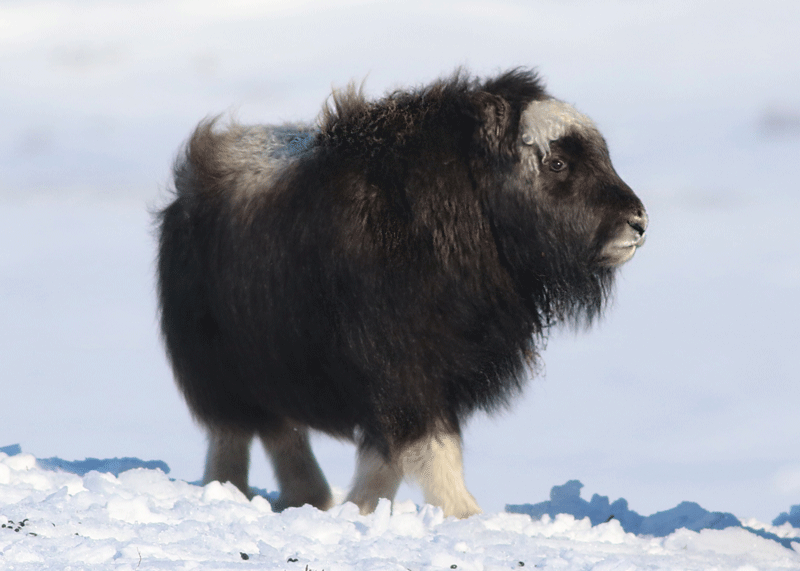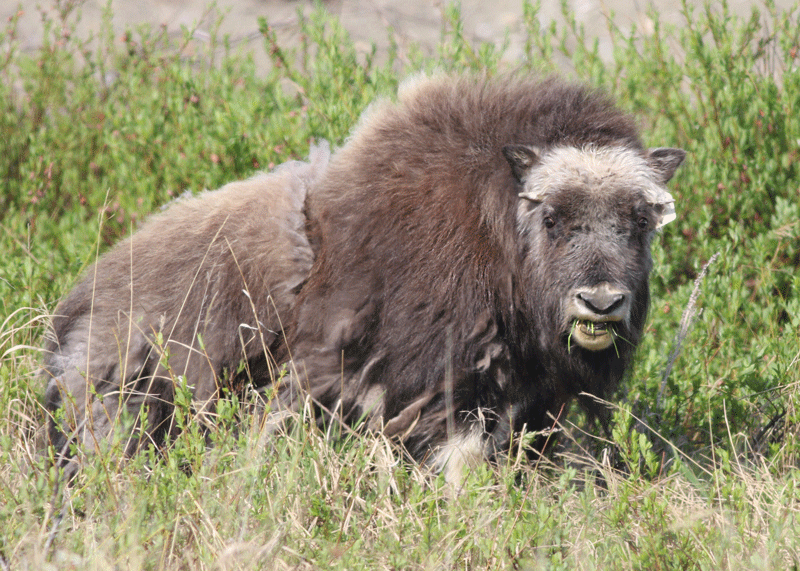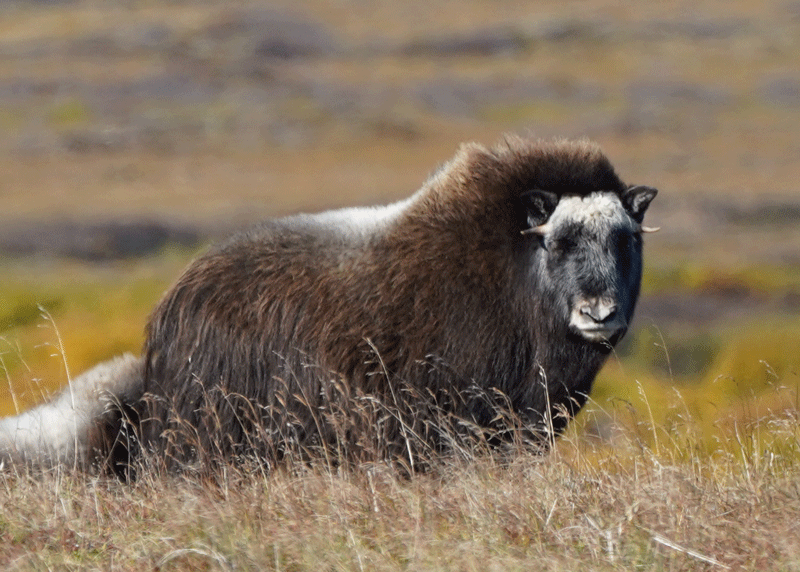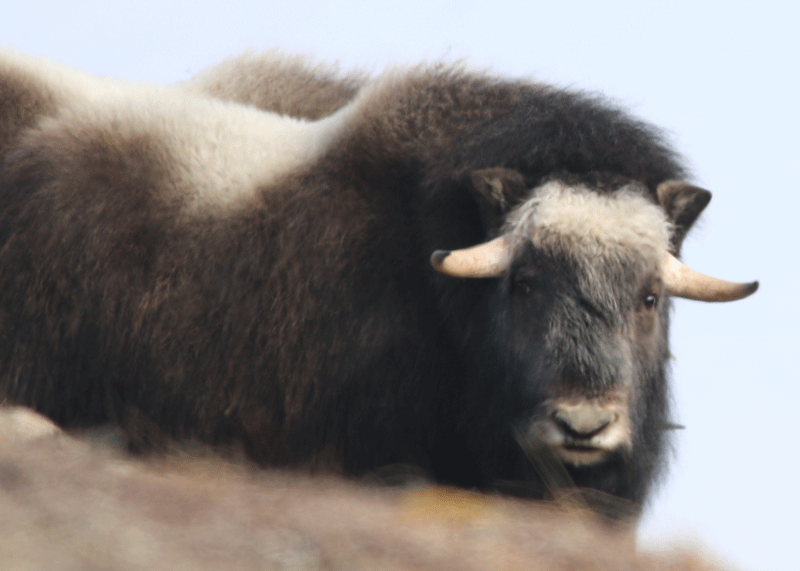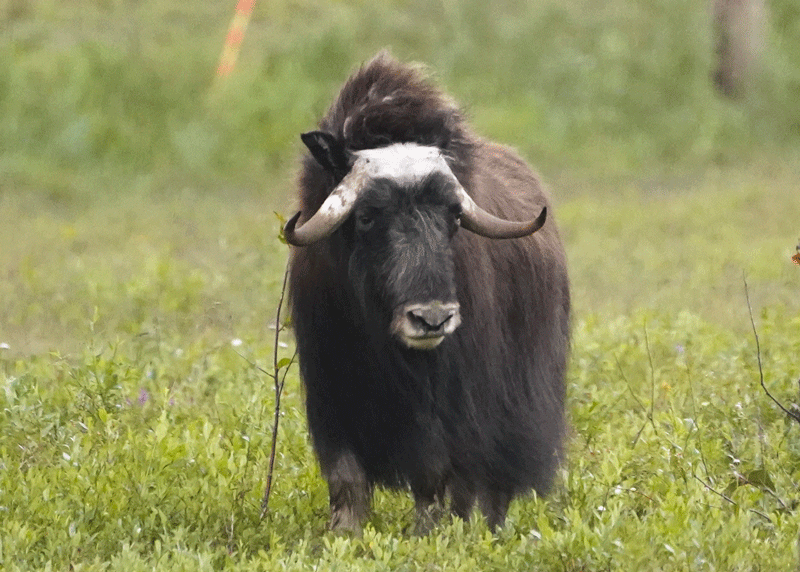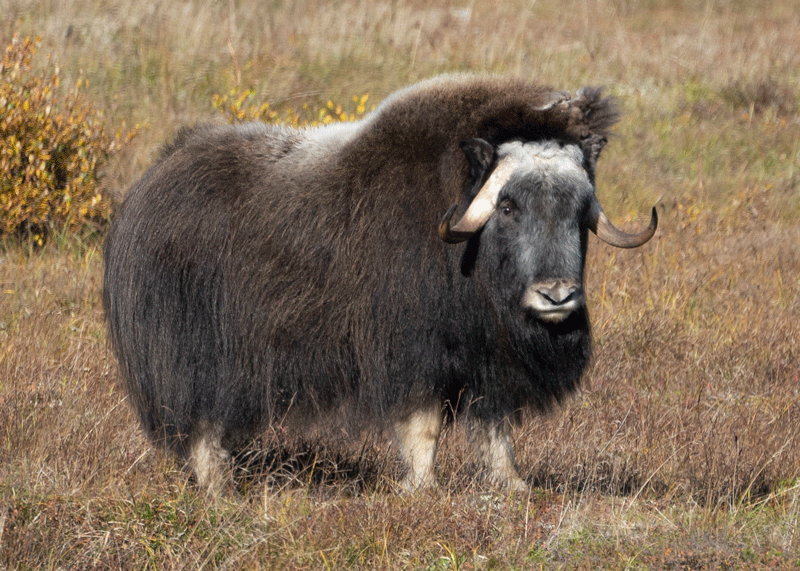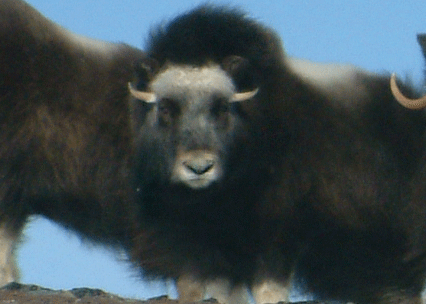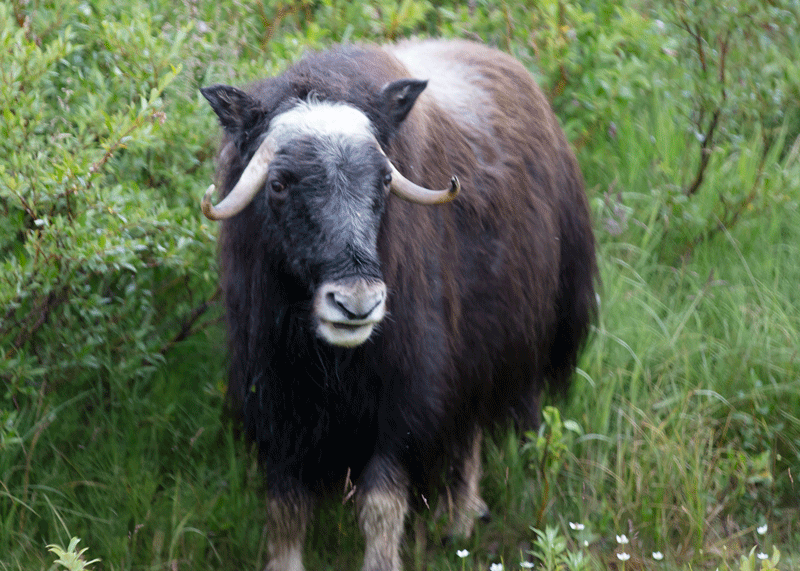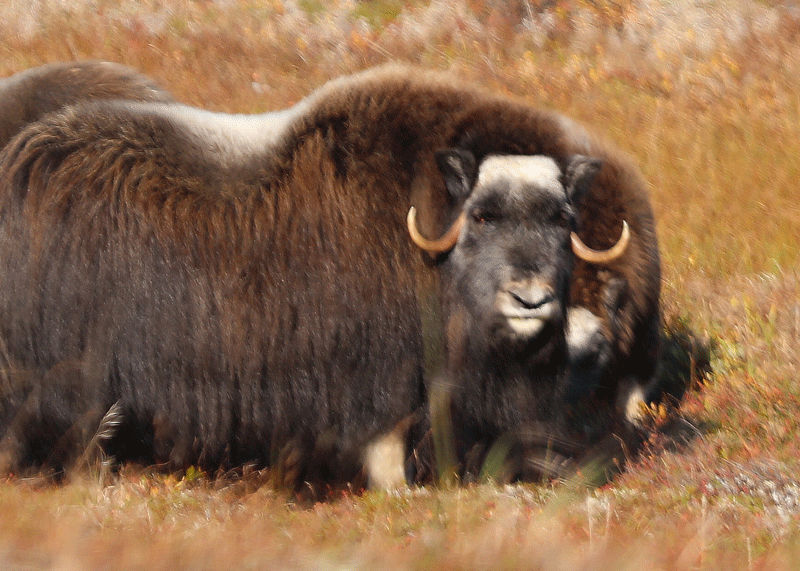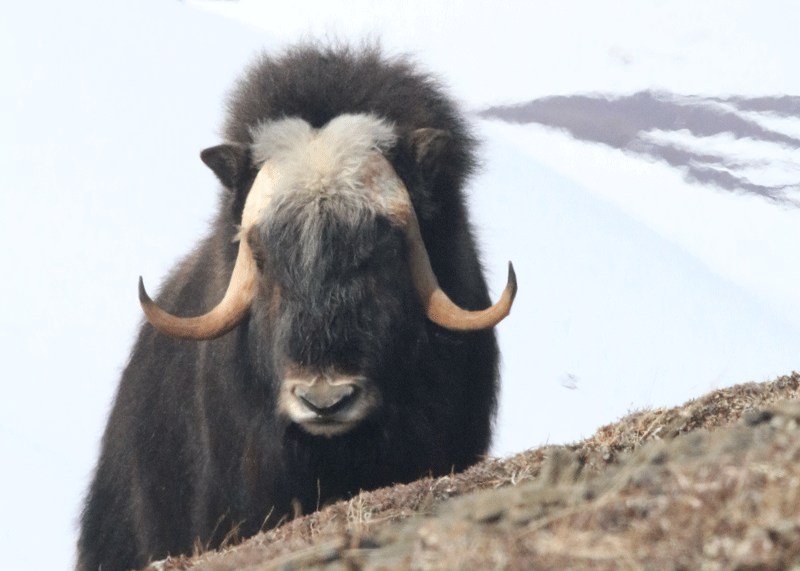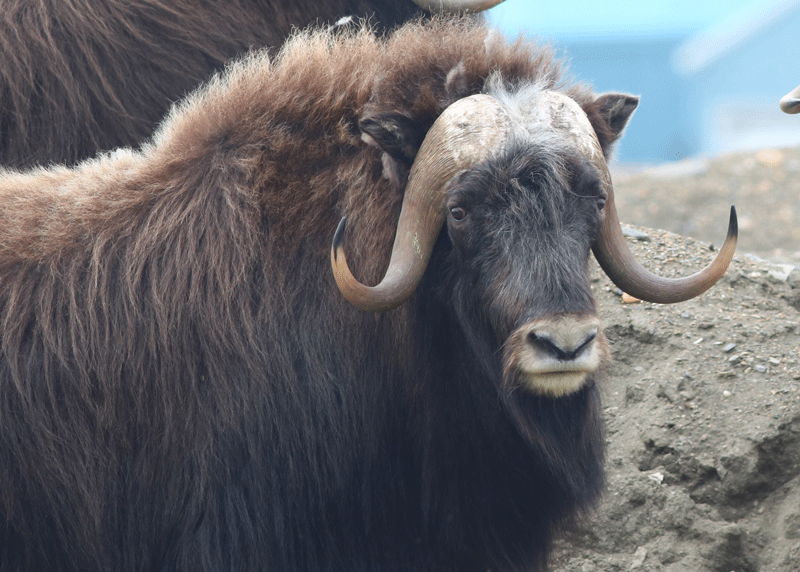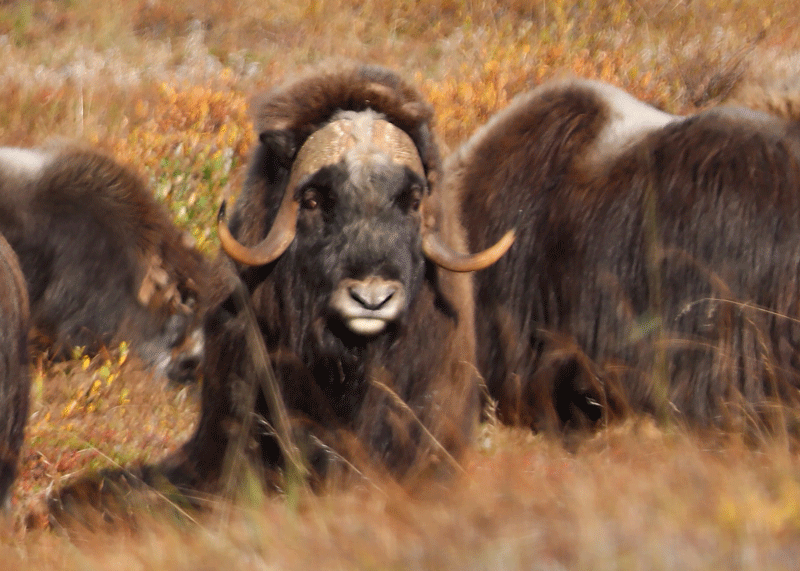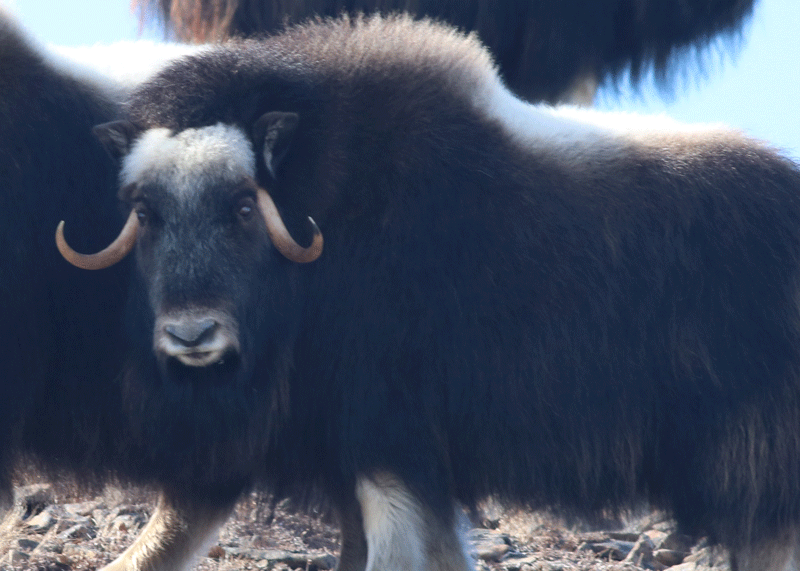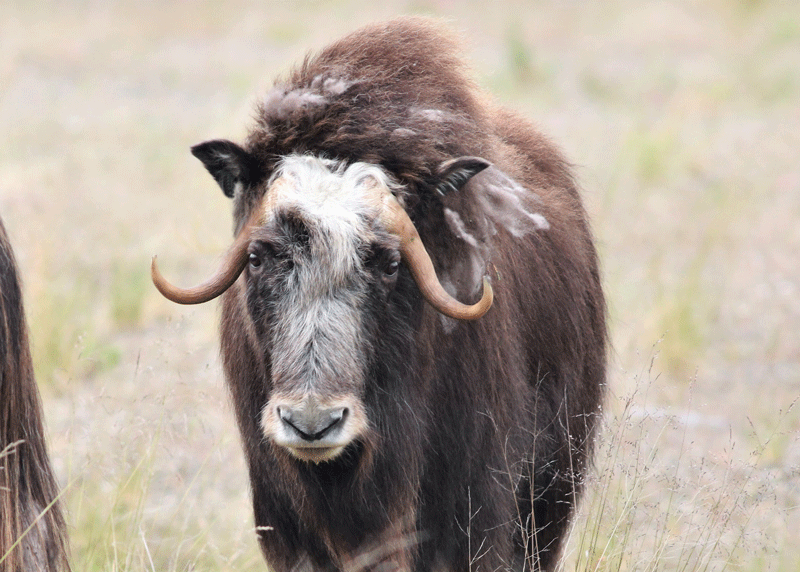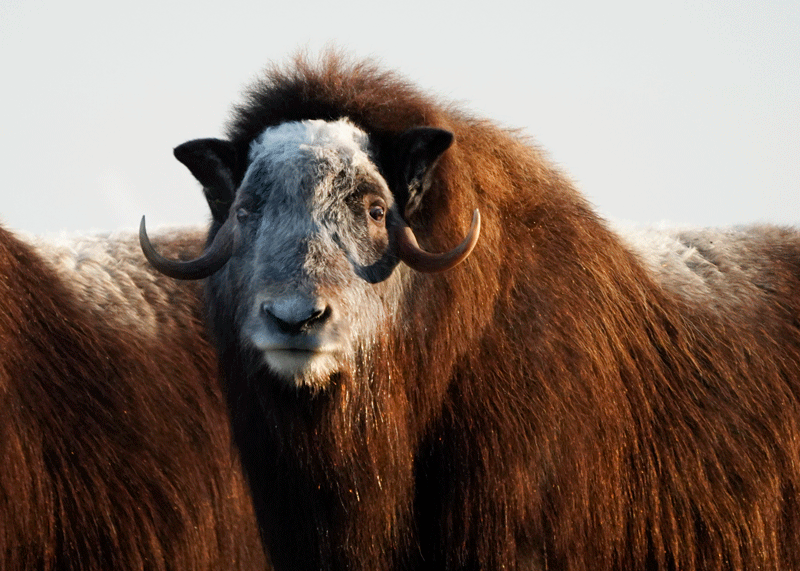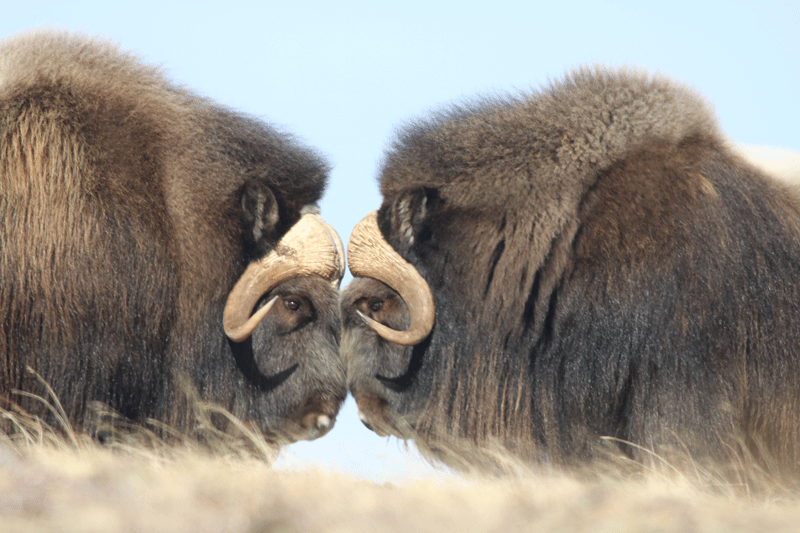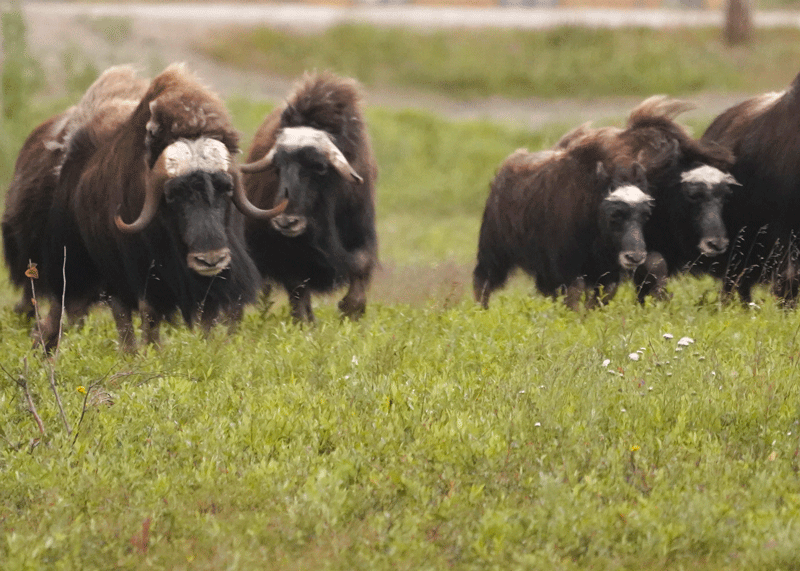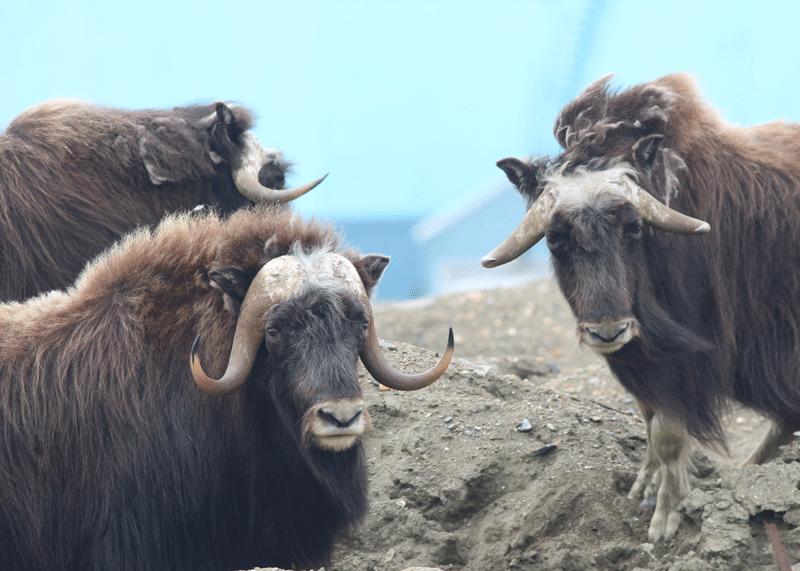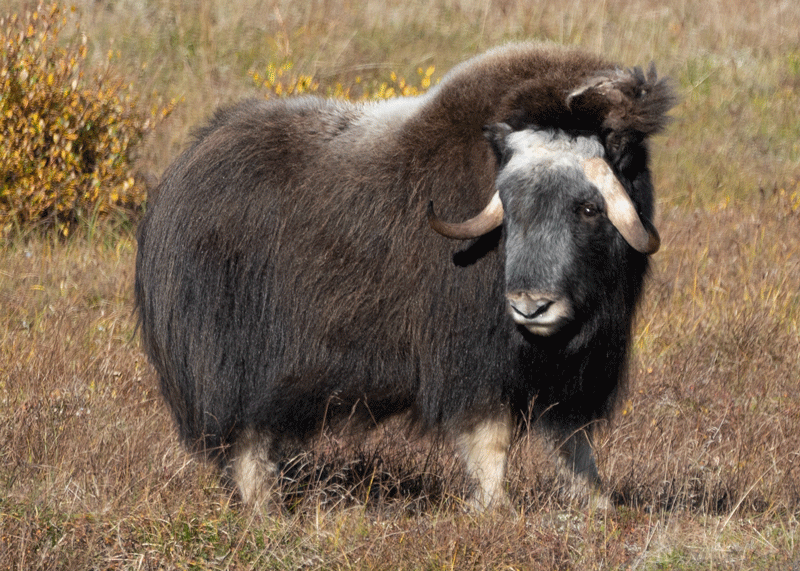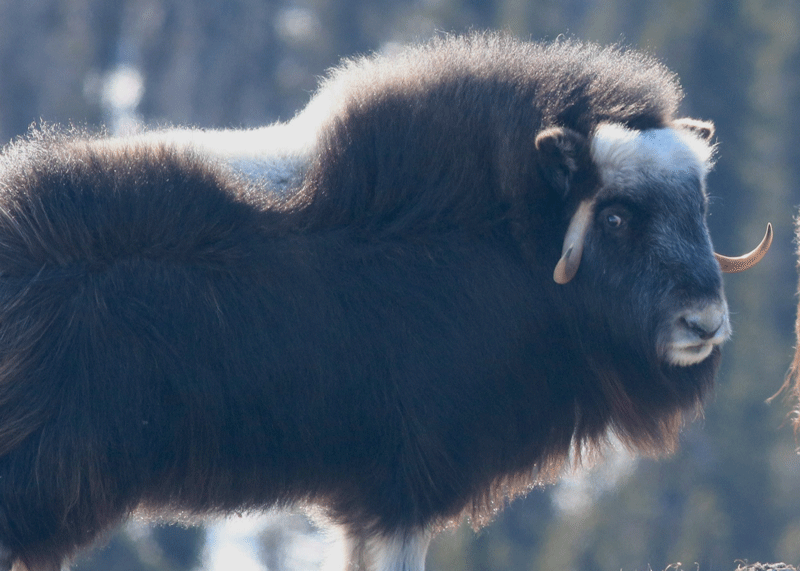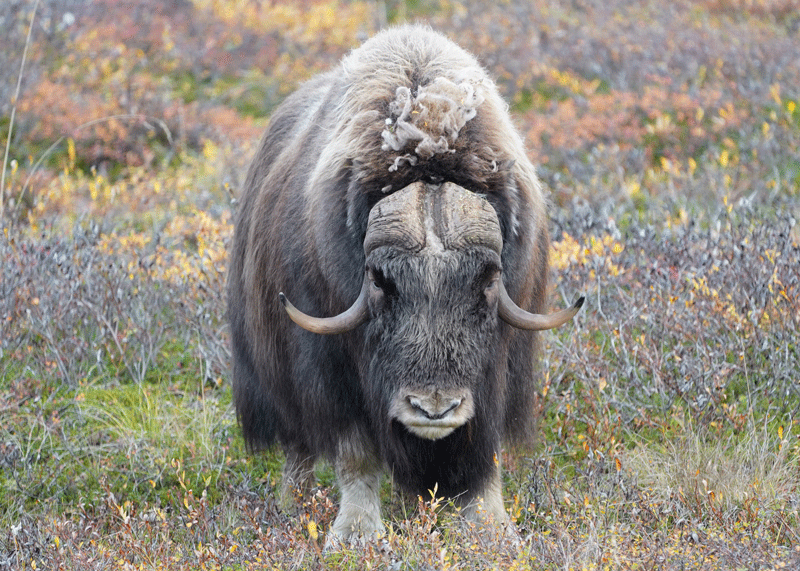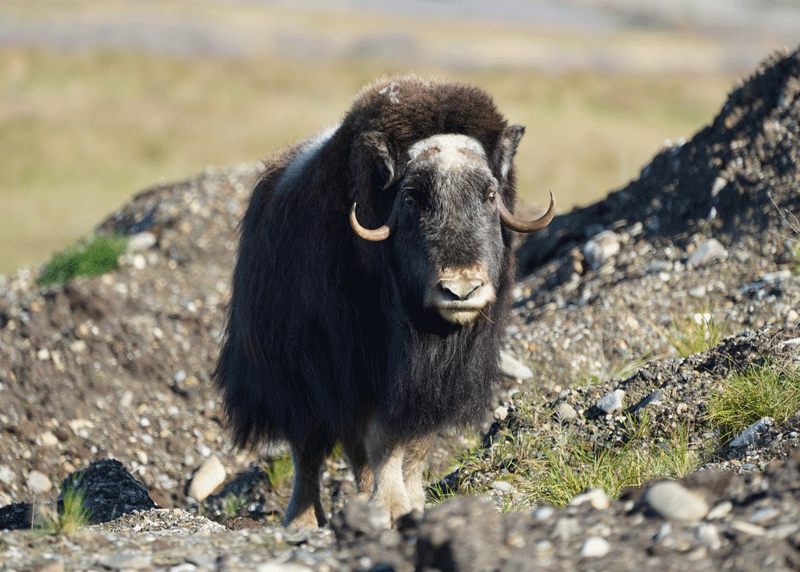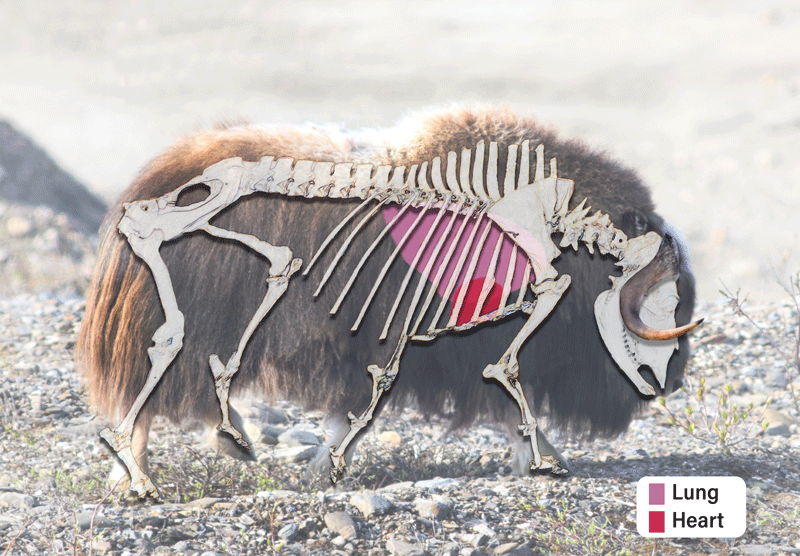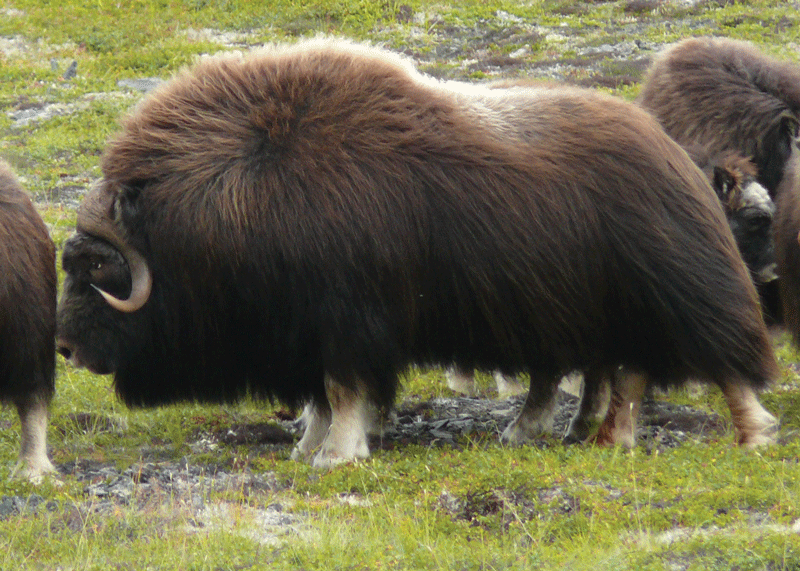Muskox Identification
Muskox
Muskoxen (Ovibos moschatus) are stocky, long-haired mammals with a slight shoulder hump and a very short tail. Both sexes have horns; however, the horns of bulls are larger and heavier than those of cows. The horns of bulls develop large base called a horn boss which nearly spans the entire forehead. Mature bulls are about 5 ft high (1.5 m) at the shoulder and weigh 600–800 lbs (273–364 kg). Cows are smaller, averaging approximately 4 ft (1.2 m) in height and weighing 400–500 lbs (182–227 kg). An 800 lb (364 kg) bull will dress out at about 480 lbs (218 kg), providing roughly 275 lbs (125 kg) of meat.
Single calves, weighing 16-34 lbs (7.25–15.4 kg), are born in the spring/summer (April to August) by cows typically three years and older. Growth is rapid and the animals weigh 189-250 lbs (86–114 kg) at six months of age.
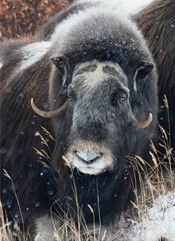
Mature cow (4 years or older)
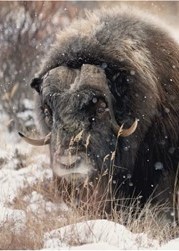
Mature Bull (4 years or older)
Calves and Yearlings
Two-Year-Olds
Dramatic growth has taken place and the horns are much thicker than cows. By spring, horns curve down slightly and point forward.
Three-Year-Olds
Early, there is no boss development (see above) however later in the year, the boss will have expanded over the forehead (see below).
Horns are near full size and forehead is covered with white hair. Body size is approximately that of an adult.
Three-year-old cows have thin-tipped horns that curve upward with a considerable amount of fuzzy white hair between the horn bases.
Groups of Muskoxen
It is common to see muskoxen in groups. The following list describes the groups of muskoxen that you are likely to see:
Not all groups are mixed-sex. Remember, not all groups have bulls and cows, the biggest animal in the group might not be a bull and single sex groups do occur.
Immature and Mature Muskox
Remember to use more than one feature to identify the appropriate sex. Most confusion in identification occurs between mature cows and immature bulls.
Immature Bull (younger than 4 years)
Mature Bull (4 years or older)
Note: It is unreliable to identify sex based solely on the color of horn tips or presence of white hair between horns.
Preventing Wounding Loss
Proper Caliber
To assure the most efficient killing capability and to reduce the chances of wounding loss, a rifle cartridge with a minimum .30 caliber bullet or larger is recommended. When hunting muskoxen, hunters should be proficient with the firearm they plan on using and avoid poor shot placement.
Take your time
Use good judgment and strive for a clean shot while muskox hunting. Patience is a necessity because it is common for muskoxen to group up after the disturbance of a shot. This makes identification of the wounded animal for follow up shots very difficult. Take your time, know what lies behind your target, wait for muskoxen to disperse, and allow your first shot to be the best shot for a clean kill.
Shooting
Common Mistakes
- Shooting before a clear shot is available.
- Failure to notice smaller animals hidden behind larger animals.
- Shooting at one muskox and killing or wounding other animals in the process.
- Misidentification of animals age and sex.
Improved Actions
Study the photos in the id section and take the online muskox identification quiz. If harvesting a bull, we recommend hunting an all-bull group of muskox and not a mixed-sex group. After the first shot, the targeted muskox may walk back into the group. By taking your time and waiting-out the injured animal, you will avoid the unnecessary risk of wounding other animals. Smaller animals are commonly hidden behind larger animals. Be sure to look for extra legs before shooting. Look closely at the photo below.
Muskox Identification Quiz
This quiz is composed of ten questions.
Click here to take the quiz

